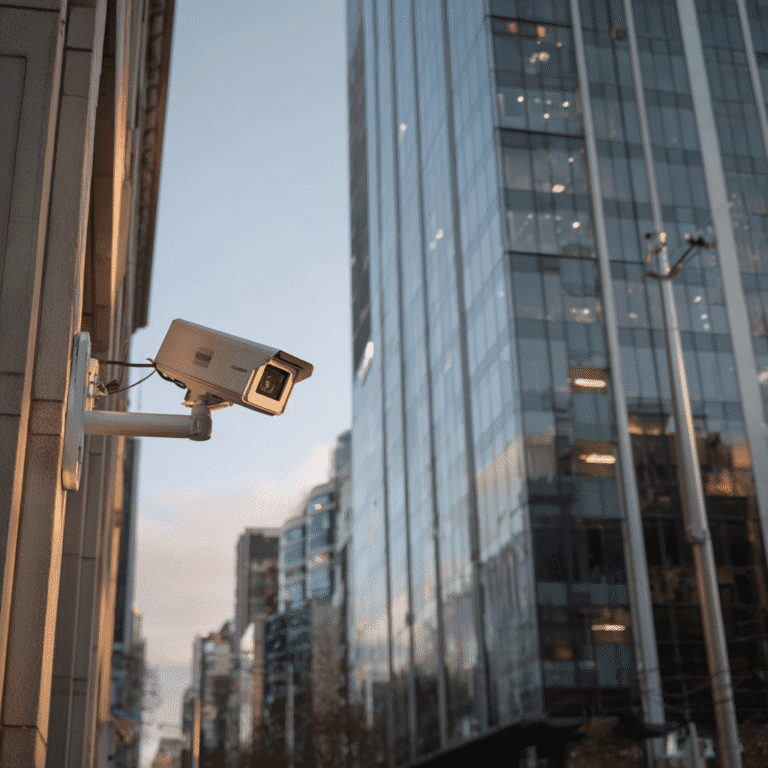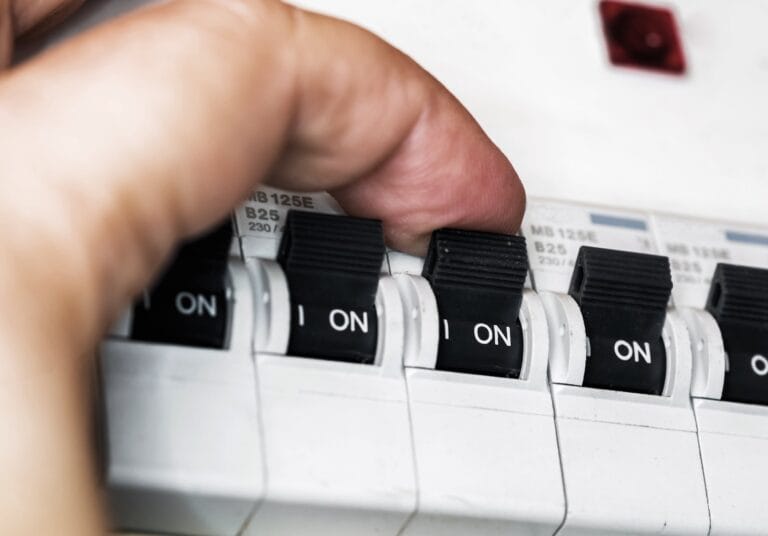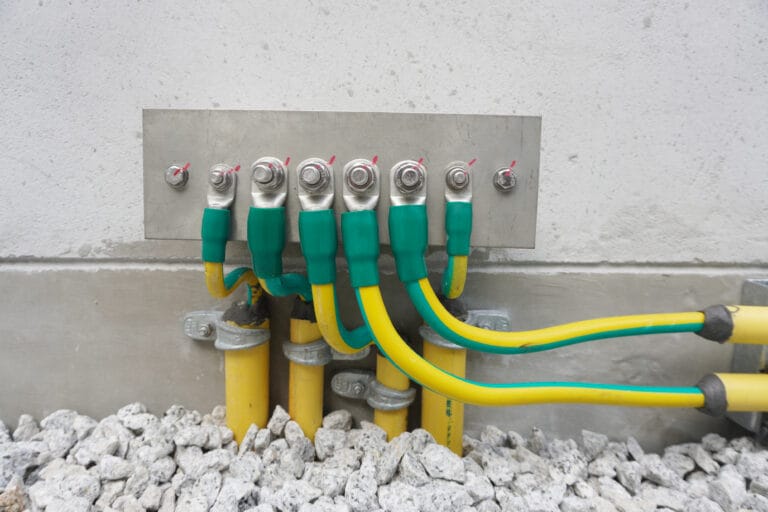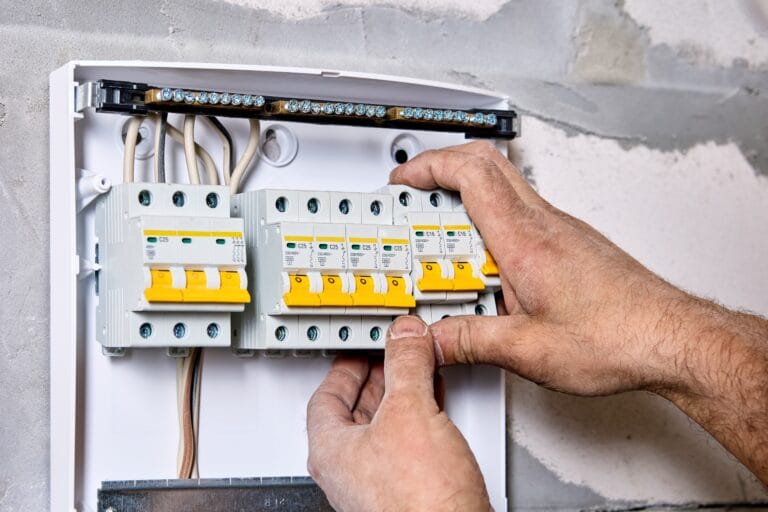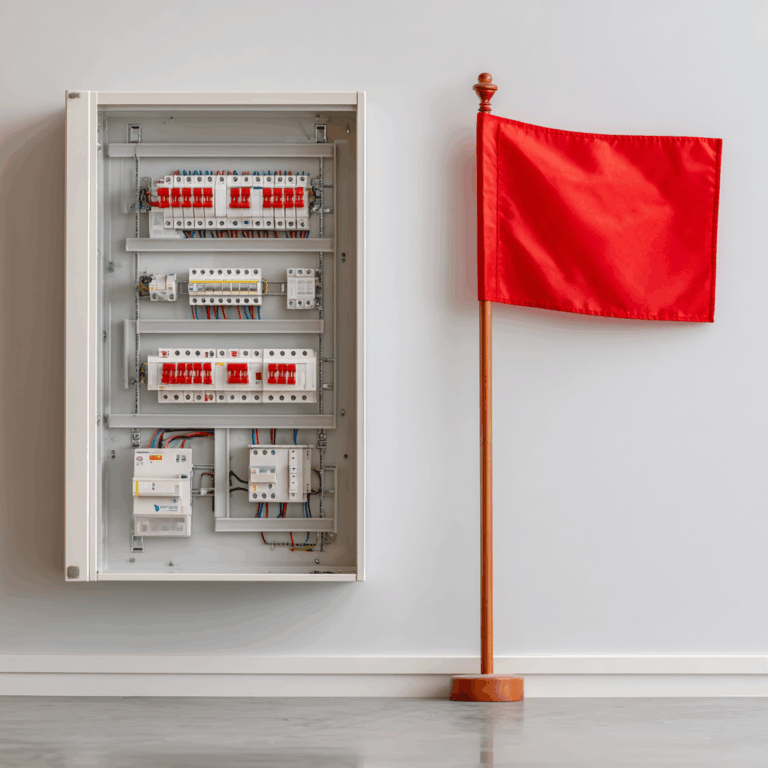Pets are naturally curious and love to explore their surroundings using their mouths and paws. While this curiosity is adorable, it can also lead to dangerous situations, especially when it comes to electrical hazards.
Why Electrical Safety Matters for Pet Owners
Electrical safety for pet owners isn’t just about protecting your belongings; it’s about keeping every member of your family safe, including your furry friends.
Hidden Electrical Hazards That Threaten Curious Pets
Pets are naturally inquisitive, often exploring their environments with boundless curiosity. This behavior can lead them straight to hidden electrical hazards within the home.
1. Exposed Cords Behind Furniture
One of the most common dangers is exposed cords behind furniture. These are often overlooked, yet they are easily accessible to pets who find these cozy spots ideal for napping or hiding. With a simple chew, a pet could expose themselves to significant risk.
2. Dangling Wires from Entertainment Systems
Dangling wires from entertainment systems and charging stations present another perilous attraction. Cords hanging down from TVs or computers are at the perfect height for curious cats and dogs. Securing these wires with cable management tools can prevent potential accidents.
3. Electrical Equipment Generating Heat
The warmth emitted by certain electrical equipment further piques pet interest. Devices such as routers and gaming consoles generate heat, making them attractive to pets seeking warmth or comfort. Ensuring these items are placed in areas inaccessible to pets is crucial.
4. Holiday Decorations with Electrical Components
During festive seasons, holiday decorations bring additional risks into the home. Temporary electrical setups with twinkling lights and extension cords draped around the house may enchant both humans and pets alike. However, these decorations can pose significant safety threats if not carefully managed.
5. Outdoor Electrical Risks in Yards and Gardens
Outside the home, outdoor electrical risks lurk in yards and gardens. Weatherproofing outdoor sockets and ensuring that any garden lighting is pet-proof can mitigate some of these dangers. It’s vital to regularly inspect outdoor areas for any exposed wires or faulty equipment that could endanger your pets.
Proactive measures in identifying and safeguarding against these hidden hazards are essential in maintaining a safe environment for your furry companions. By recognizing potential threats within your home, you take an important step toward ensuring both pet safety and peace of mind.
Signs Your Pet May Have Experienced an Electrical Shock
Pets, especially dogs and cats, are naturally curious creatures. This curiosity can sometimes lead them into dangerous situations, such as coming into contact with live electrical components. Recognizing electrical shock symptoms quickly is critical in safeguarding your pet’s health.
Behavioral Changes to Watch For
After a potential shock, your pet might display unusual behaviors, including:
- Lethargy: Reduced energy levels or reluctance to engage in normal activities.
- Anxiety or Agitation: Pacing, whining, or other signs of distress.
- Avoidance: Hesitation to approach certain areas where the incident occurred.
These changes can be subtle yet are crucial indicators that something might be wrong.
Physical Symptoms Requiring Veterinary Attention
Some physical symptoms warrant immediate veterinary attention:
- Burn Marks: Look for singed fur or burns on the mouth and paws.
- Twitching or Tremors: Uncontrolled muscle movements may indicate nervous system involvement.
- Difficulty Breathing: Rapid or labored breathing is a serious sign that requires urgent care.
Even if these symptoms appear mild, consulting a veterinarian promptly ensures the best outcome for your pet’s recovery.
Long-term Health Issues from Minor Shocks
Minor shocks might seem insignificant but can lead to long-term health issues. These include:
- Cardiac Problems: Irregular heart rhythms may develop over time.
- Neurological Effects: Impacts on the nervous system could manifest later as coordination problems or behavioral changes.
Being proactive about any shock-related incidents helps prevent future complications.
Emergency Steps If You Suspect a Shock
Immediate action can make all the difference:
- Disconnect Power Safely: Turn off the power source without touching your pet directly.
- Assess Breathing and Heart Rate: Check if your pet is breathing and has a pulse.
- Seek Veterinary Care Promptly: Contact a vet immediately for professional evaluation and treatment.
Your quick response is vital in minimizing harm and ensuring your pet receives the necessary care swiftly.
Pet-Proofing Solutions for Cords and Outlets
Ensuring electrical safety for pet owners begins with effective pet-proofing solutions. Curious pets, with their inquisitive nature, often find cords and outlets intriguing. Implementing protective measures can prevent accidents and safeguard your furry companions.
Cord Management Systems
Keeping cords out of reach is crucial. Invest in cord management systems that neatly bundle wires together, reducing accessibility to dangerous wires. These systems not only organize the clutter but also act as a barrier between your pet and potential hazards.
Deterrents for Chewing
For those pets that love to chew, bitter apple sprays or similar deterrents are highly effective. These sprays have an unpleasant taste that discourages chewing. Applying them to cords can make the habit unappealing, thus protecting both the wires and your pet.
Cord Covers and Protective Tubing
Consider using cord covers and protective tubing for added safety. These options encase your cords in a sturdy layer, making it difficult for teeth or claws to penetrate. Such solutions are ideal for areas where cords cannot be easily hidden or managed otherwise.
Pet-Friendly Outlet Covers
Pet-friendly outlet covers are indispensable in maintaining home safety. These covers prevent accidental tampering by curious paws and noses, reducing the risk of shocks or burns. Installing these covers is a simple yet effective way to enhance electrical safety in homes with pets.
By integrating these strategies into your home environment, you’re taking proactive steps towards a safer space for everyone. The key is consistent application of these methods across all areas where pets have access, ensuring that every cord and outlet is accounted for in your safety plan.
General Electrical Safety Tips for Pet Owners
Ensuring the safety of your pets around electrical appliances is crucial. Here are some electrical safety tips to keep in mind:
- Turn Off Appliances When Not in Use: Unattended appliances pose a significant risk. Always switch off and unplug devices when not using them, reducing the chances of electrical fires or accidental shocks.
- Regular Checks on Outlets and Switches: Keep an eye out for signs of wear or warmth in wall outlets and switches. Warm outlets can indicate faulty wiring that needs immediate attention from a professional.
- Prevent Overloading Sockets: Avoid overloading sockets with too many plugs. Use power strips with surge protectors as a safer alternative, ensuring each plug is secure to prevent sparks or overheating.
- Safe Appliance Placement: Position appliances away from water sources such as sinks, bathtubs, or pet water bowls. This minimizes the risk of electrocution, keeping both your home and pets safe from potential accidents.
By integrating these practices into your daily routine, you contribute to a safer environment for your entire family, including your beloved pets. Prioritizing appliance safety and fire prevention protects both your home and its furry inhabitants.
Emergency Preparedness for Pet Owners
Ensuring our furry friends’ safety during emergencies requires diligent preparation. Here are some essential steps every pet owner should take:
1. Install Monitored Smoke Detectors
Emergency preparedness begins with installing monitored smoke detectors. These devices provide early warnings, giving you crucial time to act and safeguard your pets. Opt for systems that alert you remotely, ensuring you’re informed even when away.
2. Use Pet Alert Window Clings
A simple yet effective tool is the pet alert window cling. This visible sign informs emergency responders about the presence of pets inside your home during critical situations. Include details such as the number and type of animals, ensuring rescue teams can act swiftly and effectively.
3. Educate Your Family
Educating family members on emergency procedures involving pets is vital. Conduct regular drills that include securing animals in carriers or designated safe zones. Assign roles—who grabs the pet, who gathers supplies—to streamline actions under pressure.
These steps ensure comprehensive protection, minimizing risks to your beloved pets and contributing to a safer household environment. Prioritizing these measures today safeguards against unforeseen events tomorrow.
Conclusion
As a responsible pet owner, it’s crucial to implement the safety measures we’ve discussed to create a secure environment for your beloved animals. Understanding electrical safety goes beyond just protecting your home; it also means prioritizing the safety of your furry friends.
Here are some key takeaways:
- Be aware of electrical hazards: Familiarize yourself with potential risks in your home such as exposed wires, faulty outlets, or accessible cords that could pose a danger to your pets.
- Take preventive measures: Use cord covers or cable management solutions to keep electrical cables out of reach from curious paws. Regularly inspect your electrical appliances and devices for any signs of damage or wear.
- Educate yourself and others: Share knowledge about electrical safety with family members, friends, and pet sitters who may interact with your pets. The more people are aware of potential dangers, the better equipped they’ll be to protect them.



